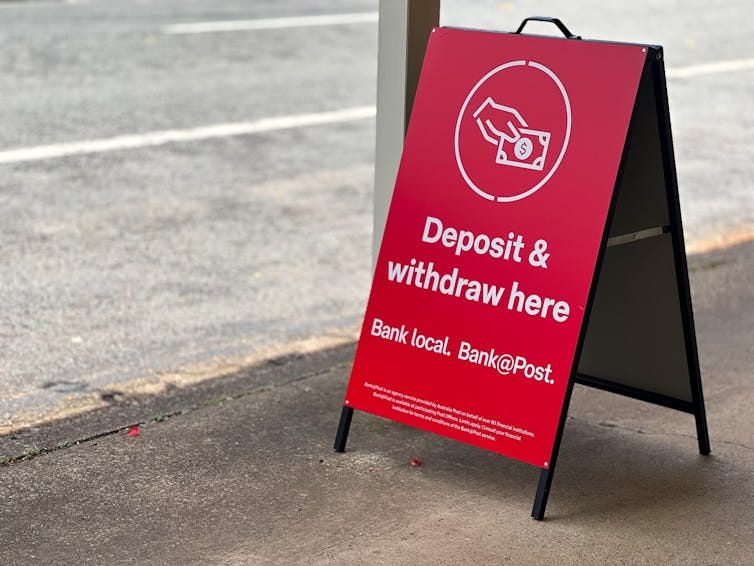ANZ’s $4.9 billion Suncorp takeover will now go ahead.
Is the government sending mixed messages on business competition?
I did this as an instant-reax piece for The Conversation a couple of weeks ago. I chatted to the editor, and then we turned that into an article. It’s a good way of getting something out quickly when you’re busy, as I have been lately. I’ve finally found time to send this out to you (no longer instant reax, of course).
ANZ’s $4.9 billion Suncorp takeover will now go ahead.
Two years after the deal was first announced, Treasurer Jim Chalmers has today given the green light for ANZ to acquire the banking arm of Queensland-based insurer Suncorp.
The A$4.9 billion deal will be the biggest in Australian banking since Westpac’s acquisition of St George in 2008.
It will of course be subject to some important enforceable conditions.
Among them, the combined entity must ensure there will be no net job losses across Australia and no regional branch closures for three years.
ANZ must also “make every effort” to join Australia Post’s banking service “Bank@Post”, which offers cash withdrawals, deposits and balance inquiries at a range of post offices.
It will also be required to make lending commitments worth billions of dollars for a range of energy and infrastructure projects as well as business and housing more generally across Queensland.
But three years isn’t a long time in the grand scheme of things, and this deal will inevitably lead to a reduction in competition in the banking sector.
With Australia’s high industry concentration already in the public spotlight, does this decision reflect an inconsistent approach by the government?
Mixed messages from the government
The ongoing cost-of-living crisis has put Australia’s industry concentration levels firmly in the public eye. Many industries – such as airlines, supermarkets and petrol retailers – have become dominated by a few large players, to the growing unease of the Australian public.The policy response has been inconsistent.
On the one hand, the government has just waved through this merger, despite the Australian Competition and Consumer Commission (ACCC) denying its authorisation last year on competition concerns.
But at the same time, they’ve been waving the big stick at Australia’s supermarket oligopoly, just this week committing to impose huge new fines for mistreatment of suppliers.

Pressure from the general public could be contributing to the mixed messages we seem to be receiving. All of this may reflect a breakdown of consensus on competition policy occurring in Australia and around the world.
It’s important to understand how thinking about competition has changed over the years.
For much of the 20th century, particularly in the United States, there was a very strong view that any reduction in competition was inherently undesirable, the so-called “trust-busting” movement, which began with the Sherman Antitrust Act of 1890.
But this was challenged by the “Chicago Revolution”, which emerged from the University of Chicago in the 1970s. This saw a range of influential scholars argue there wasn’t much to worry about – that mergers promoted efficiency in various ways, and it was too hard to establish monopoly power without a government doing so for you.
The general result was a much more permissive attitude to mergers than there had been in the past.
Chicago thought remains influential in our approach to mergers today, but there has been a strong counter-reaction, particularly in the wake of the global financial crisis which undercut belief in the virtues of deregulated markets.
In an opinion piece published soon after Labor took office, Assistant Minister for Competition Andrew Leigh invoked the Sherman Act as a model for dealing with increasingly concentrated markets.
Yet the legislation underpinning our process remains influenced by the Chicago school of thought.
If the ACCC doesn’t like a merger, it can be appealed to the Australian Competition Tribunal. If the tribunal finds there isn’t a huge reduction in competition and there may be some efficiencies, it is likely to wave it through.

However, governments are much more likely to intervene when market power becomes politically sensitive.
Banks have managed to keep out of the spotlight somewhat since the fallout from the banking royal commission, so the ANZ-Suncorp merger may attract relatively little attention.
In contrast, the two big supermarkets are currently “on the nose” politically and seen to clearly dominate their industry. This is most likely what has emboldened the government to lean on them more directly.
Is post office banking an effective answer to branch closures?
One of the most interesting things about this announcement is the requirement for ANZ to seek to join Australia Post’s banking service.
All of Australia’s banks are facing broader structural pressures to close regional branches. The big shift in how banking is done – more online services and reduced use of cash, leading to fewer physical branches – is only likely to continue.
According to the Australian Prudential Regulatory Authority, almost 800 branch services have closed in regional areas between June 2017 and June 2023.

Using Australia Post as a service location for the major banks has emerged as the key public policy response to branch closures. Australia Post, which has a community service obligation, is being used to pick up the pieces where the banks left off.
The alternative recently proposed by a Senate committee – using the post office as the basis of a new public bank – has not attracted much political support.
We’re unlikely to see reform anytime soon
More broadly across the Australian public, the view that there isn’t enough business competition and that the big players don’t have don’t have our interests at heart seems widely held.
But this largely isn’t reflected in any new legislation. As on many other issues, the Albanese government has established a review, but it is unlikely to report within the term of the current parliament.
For the moment, the mixed messages are only likely to continue.
Read my newsletter


